Table of content
Product subscriptions can be a lucrative business model for many e-commerce stores, but is it always justified to introduce them? We’ve decided to explore statistics, determine facts, and provide recommendations for businesses that wonder if having such an offer might help them increase revenue.
In this article, we not only answer all the “whys” of e-commerce product subscriptions. We also take a closer look at the “hows”. We want to guide organizations that want to successfully implement product subscriptions and help them achieve their business goals. Let’s go!
If you want to explore this topic in the video form, watch the session below:
Navigating the Landscape of Product Subscriptions
Product subscription research seems to indicate that it’s a profitable business model. According to Gartner, 70% of organizations have either already deployed subscription services or are strongly considering introducing them. The number of consumers who invest in such offers also grows and is the highest in the United States.
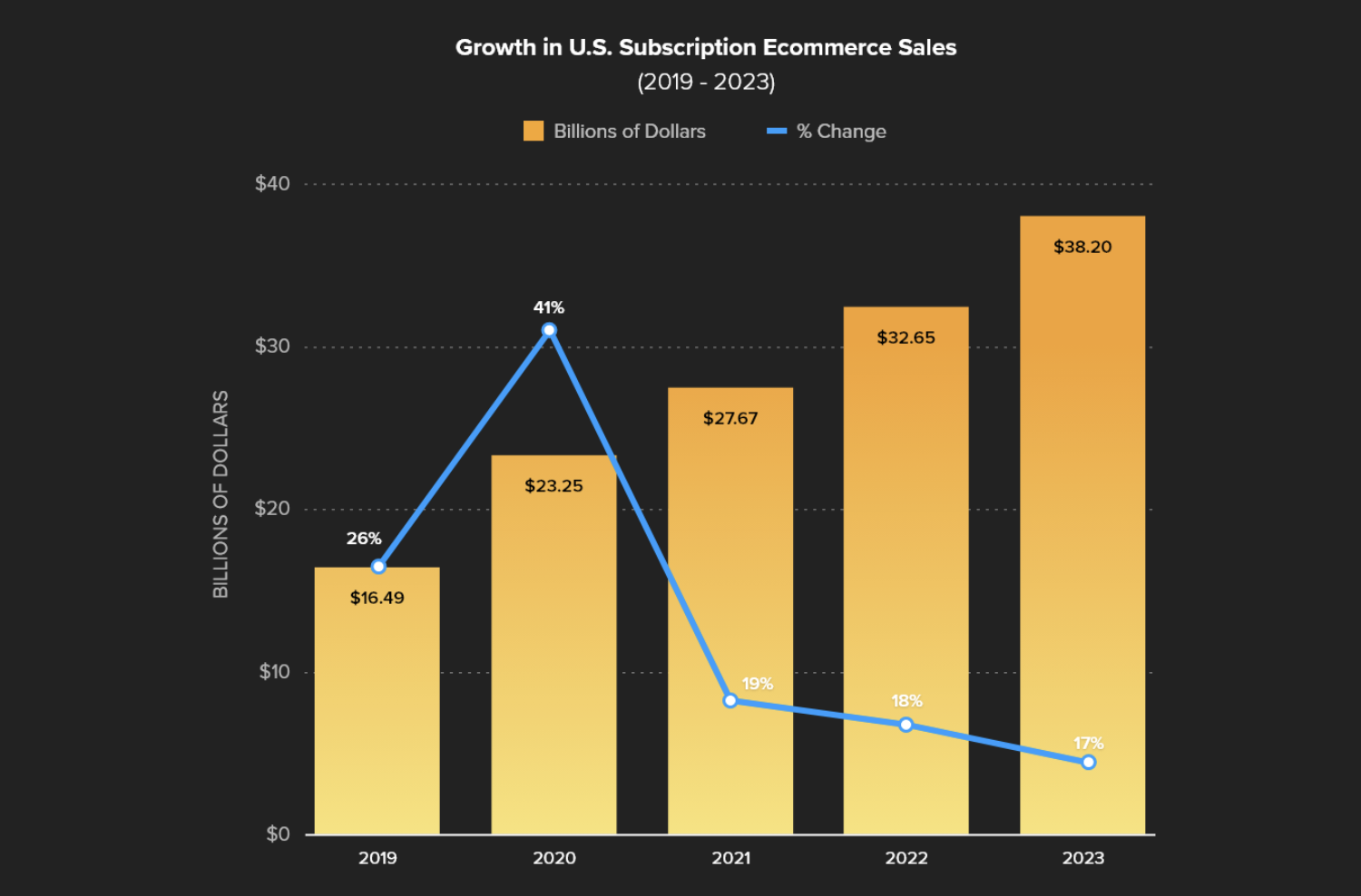
During the pandemic, the e-commerce product subscription market in this country experienced rapid growth, increasing by 41%. Since then, the year-to-year expansion trend decreased (17%-19%), which means that the market value still expands, only slower. Right now, its estimated worth is approximately $38 million.
Exploring the Theory Behind Subscriptions
Before we dive deeper into strategies, we should explain all the nuances of subscriptions and what options e-commerce stores can bet on.
Types of Subscriptions
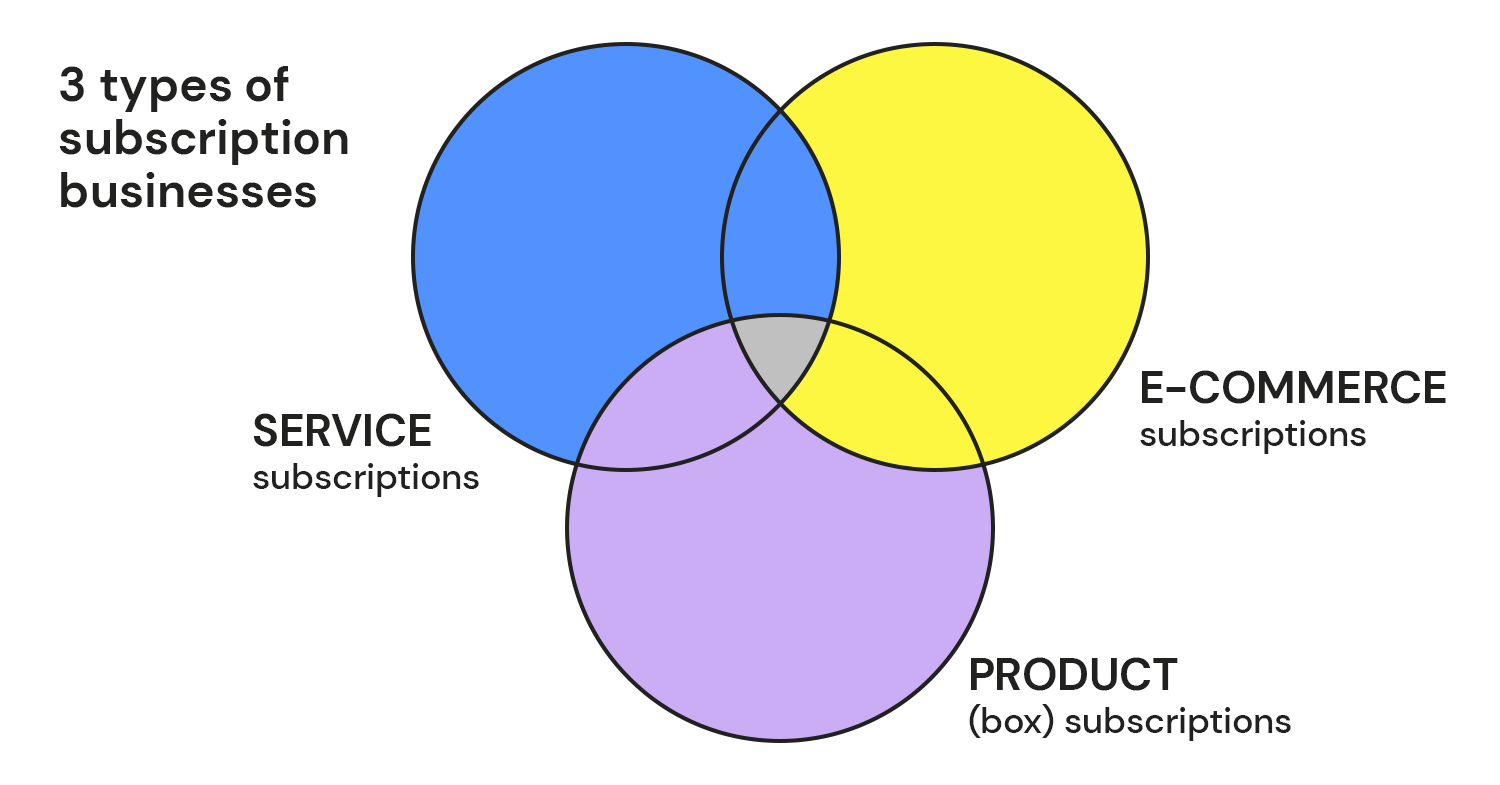
There are three main types of subscriptions offered by businesses worldwide:
- Service subscriptions – e.g. information websites, VoD, fitness portals.
- E-commerce subscriptions – free delivery and access to additional features within an online store.
- Product or box subscriptions – sets of products delivered to the customer’s door.
Amazon is a great example of combining all three types – it offers free delivery, exclusive products, and access to its VoD platform Prime Video.
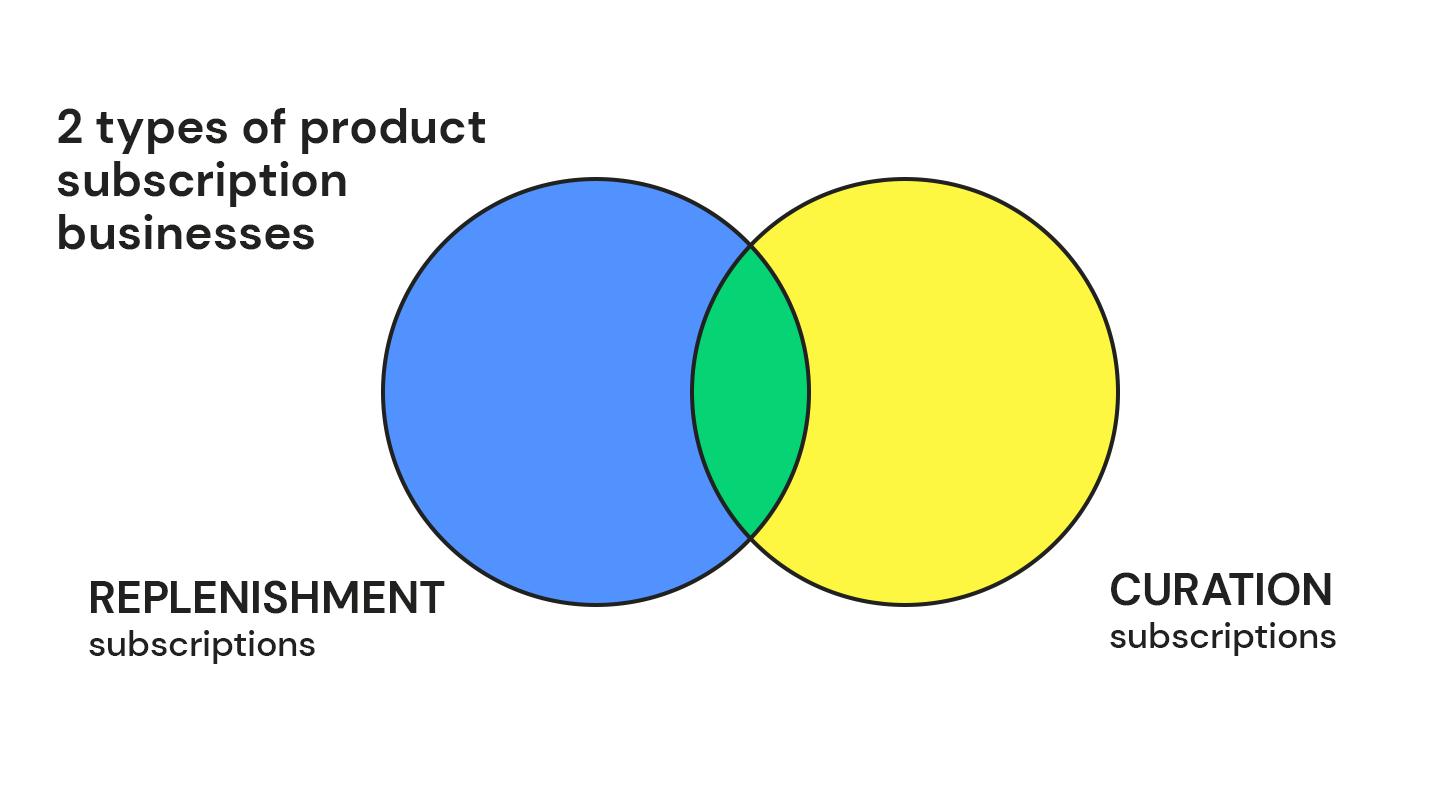
As for product subscriptions, they can be divided into two categories – curation and replenishment. The former collects a lot of details about the customer to prepare a personalized package of items, while the latter delivers a settled set of products regularly.
There are also mixed subscription services, where the buyer has to provide information first, and then they receive a dedicated box every week or month (e.g. dog food subscription based on breed and dietary requirements).
Subscription Business Models
Two common business models include hybrid and subscription-only. While there are online shops that sell products “traditionally” and offer subscriptions, there are also brands that are exclusively subscription-based.
This model is gaining traction as companies seek predictability and consistent revenue. Their main challenge is to create strategies for sustained success, ensuring steady profit in the era of constantly shifting consumer preferences.
The first and most famous product subscription in the e-commerce realm was Dollar Shave Club. Founded in 2011, they deliver razors to a customer’s door every month. In 2016, Unilever acquired the company for $1 billion. At that time, they had approximately 3.6 million users. That’s when the interest in the subscription business model skyrocketed.
Analyzing the Product Subscription Pros and Cons
To understand how e-commerce product subscriptions are perceived by both companies and clients, we should determine the benefits and drawbacks of this model.
The Business Perspective
Repetitiveness is one of the most positive traits of subscriptions, appreciated by both brands and investors. Predictable revenue streams offer higher levels of stability. Additionally, retention for subscription-based services is three to five times higher than for ordinary purchases. Customer lifetime value (CLV) can also increase 1.6-3.6x for such services.
However, to achieve such impressive results, enterprises have to invest up to 300% more towards customer acquisition (CAC). Finding the right CLV to CAC ratio is still easier, and is usually two to three times higher than for single purchases. All that companies have to do is to offer the right quality for the right price.
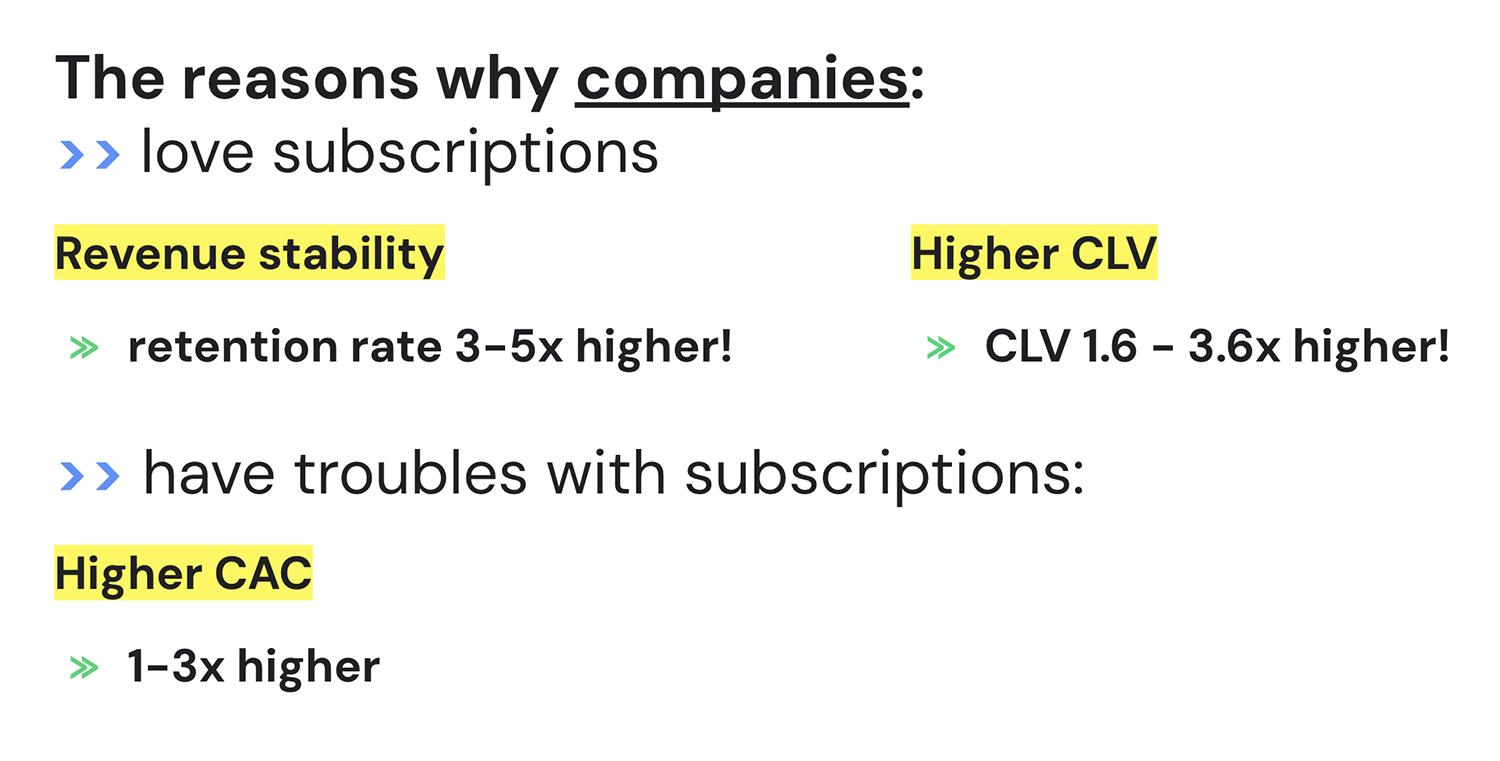
The Customer Perspective
The main reason consumers pick subscription services is the financial incentive. Oftentimes, they understand that signing up for such an offer means they will get a better deal and save money – even if it’s not an enormous amount. The usual discount that we could observe for various subscription plans was between 15-25%.
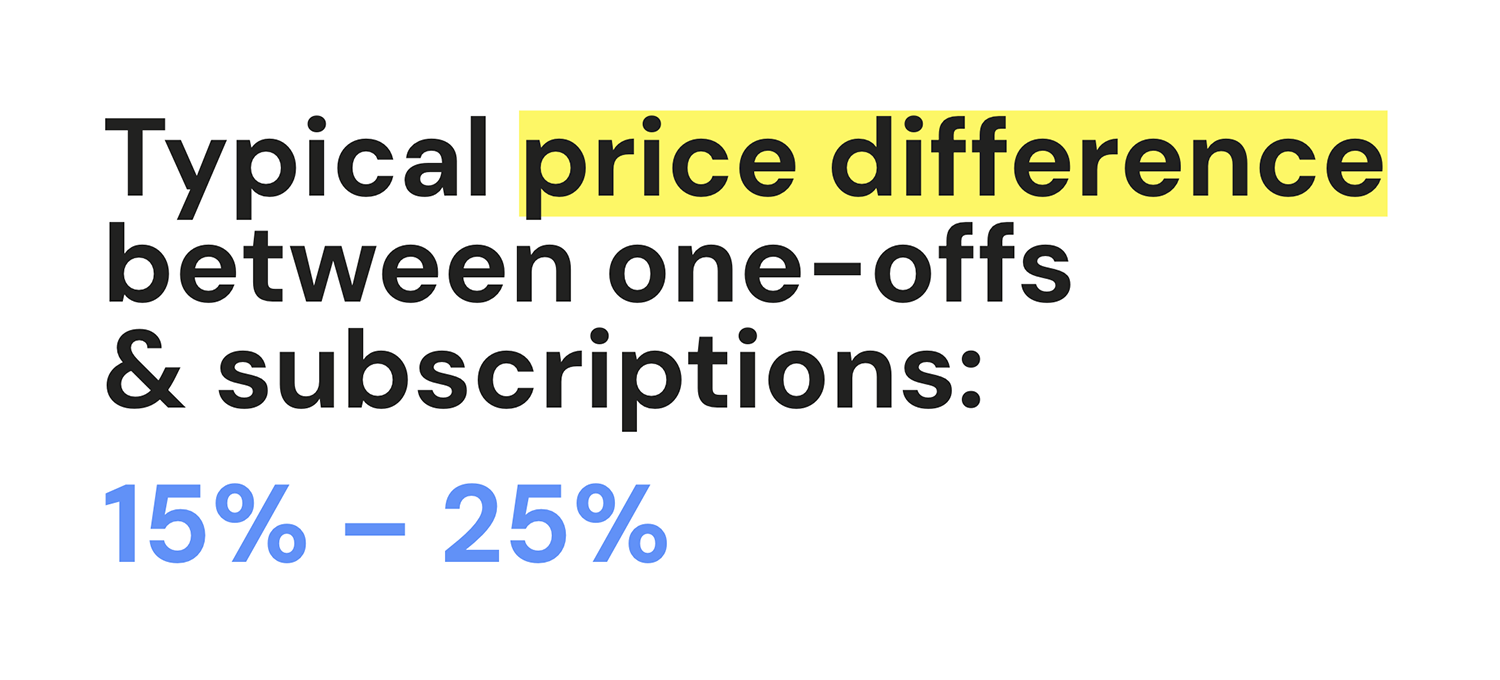
The second main reason to bet on this e-commerce model is convenience – getting products delivered without worrying about buying them every month.
As for the reasons against subscriptions, customers usually have a few. One of them is they prefer to pay on the go. They don’t want to commit to regular payments or keep so much product at their houses. Sometimes they can’t see the value of a subscription plan, which means it should be exposed better by the brand.
Finally, they might be an occasional buyer of a particular product, which means they are not the target customer because subscription-based companies are looking for frequent buyers.
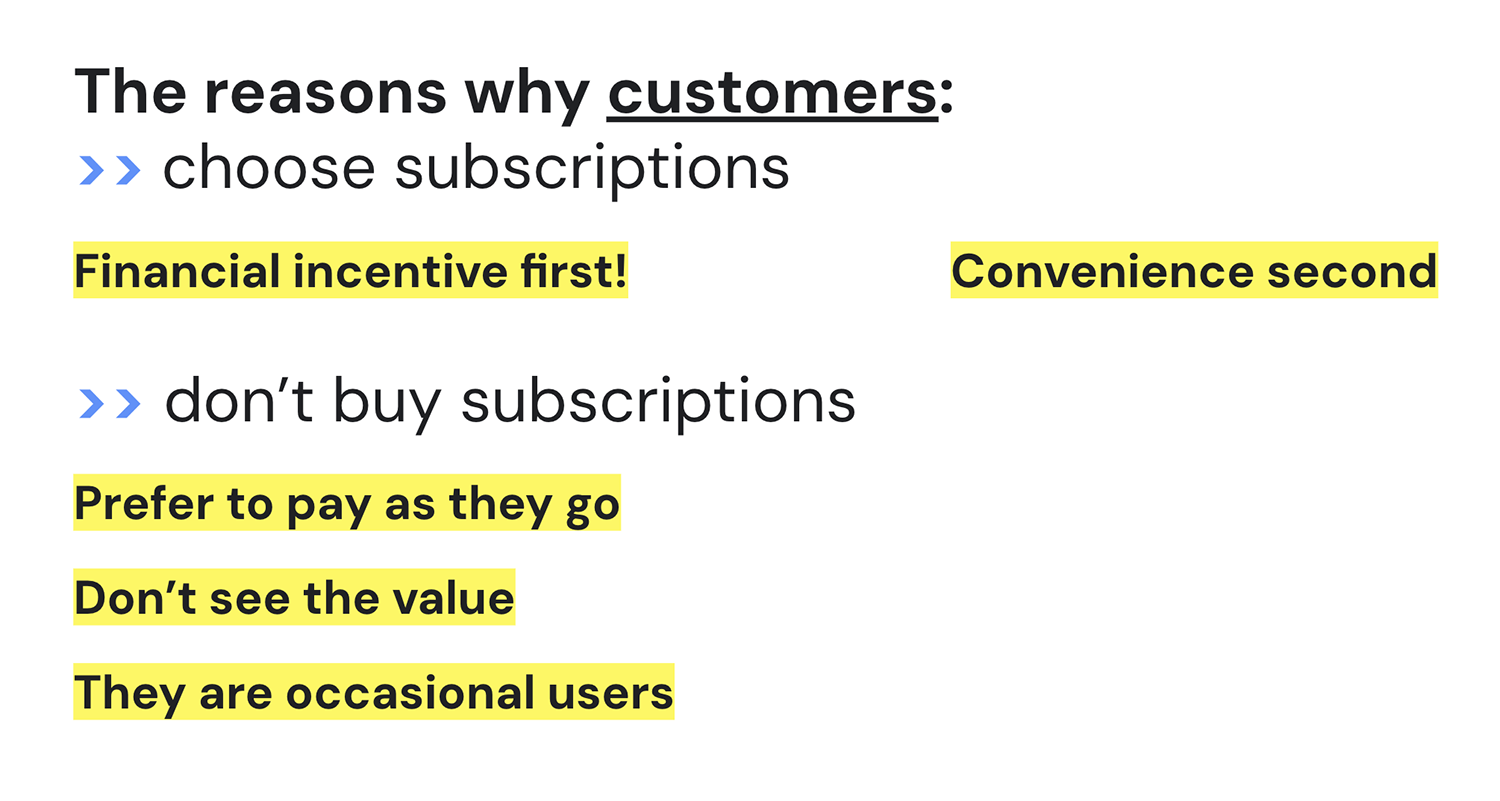
The Payment Methods Dilemma
There’s one issue we should discuss further since many business owners might wonder if the payment method could scare off potential customers. Subscriptions are usually card-only, and not all users like that. Entering the numbers manually seems to be a small inconvenience, but it can determine if the subscription will be bought. No credit card trials for digital products are proof of the tendency against this payment method.
The preferred methods differ extremely depending on the region. Even in Europe, every country has its favorite payment method, depending on the financial systems and consumer behaviors. In the US, using a credit card to pay for a subscription is not considered a problem because the e-commerce market in this country is based on such payments. In countries where digital wallets and other comfortable payments are available (e.g. BLIK in Poland), aversion towards credit cards is much higher.
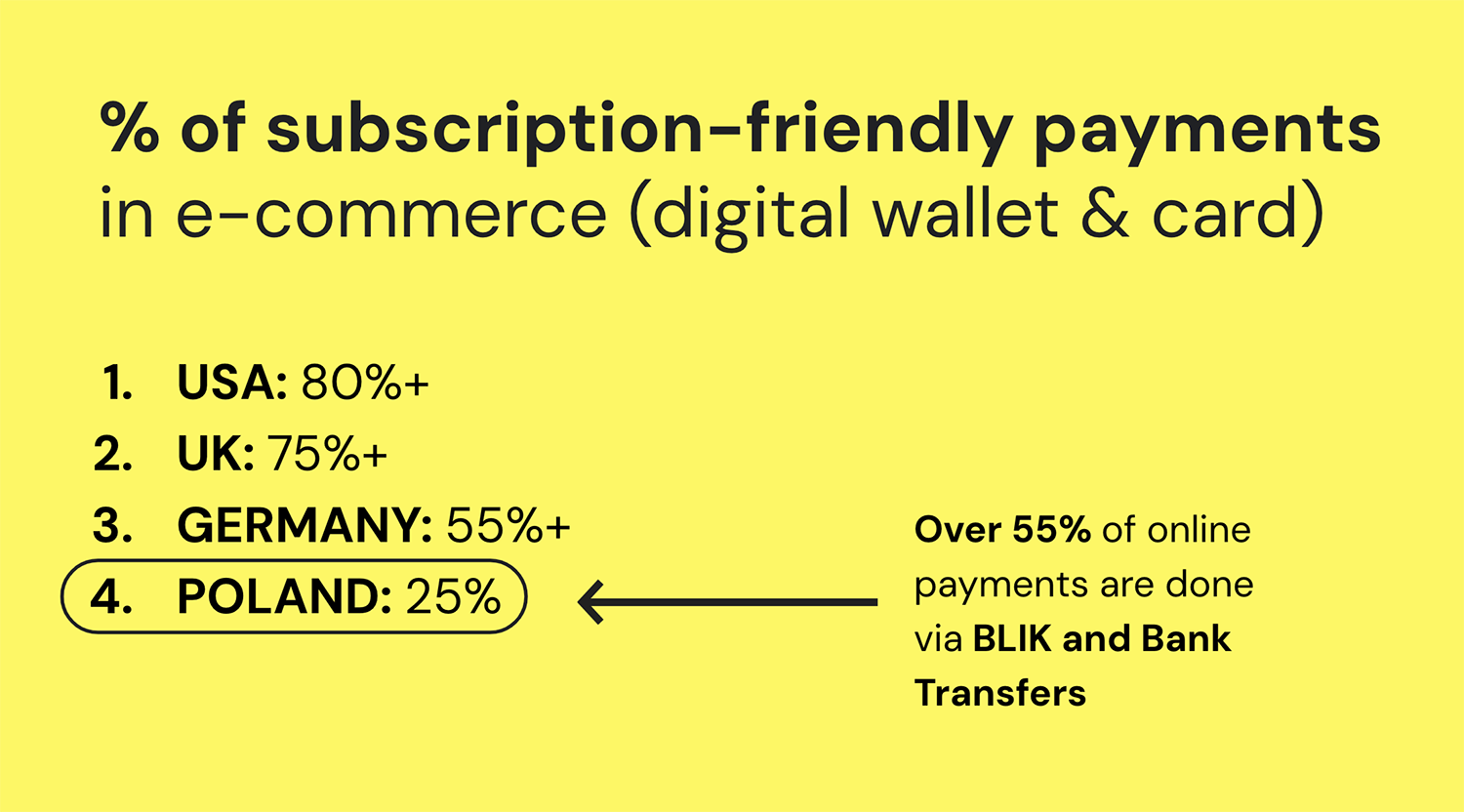
That’s why it’s important to provide payments adjusted to the personas and target audience. For example, users who are used to paying for streaming services are more familiar with card payments, while the ones who don’t use them opt for other, simpler payment options. It’s important to analyze which group will be the product dedicated to and provide comfortable payment options.
Customer Retention and Managing Cancellations
The success of a product subscription model depends on effective customer retention strategies. Did you know that, according to Gartner, only 20% of such businesses will be able to keep customer retention? This number means that subscription-based companies need practical strategies to keep their customers engaged and committed.
What are the main reasons for subscription cancellations?
- Dissatisfaction with the product
- Preference to pay on the go
- Not seeing the actual value
- Lack of flexibility
It’s important to understand human behaviors when designing an attractive subscription package. Customers want to see the value every time they receive the product, and they want to experience excitement. Many subscriptions are repeatable, and people like changes. To succeed, brands need to create a habit out of their subscription offer.
How to Form Strong Consumer Habits?
Not every subscription-based product will be linked to customers’ existing habits. For example, a personal hygiene box is attractive because people use tampons or shave regularly. However, a supplement subscription might not work well since many consumers forget about taking them. The brand must help the buyer form a new habit.
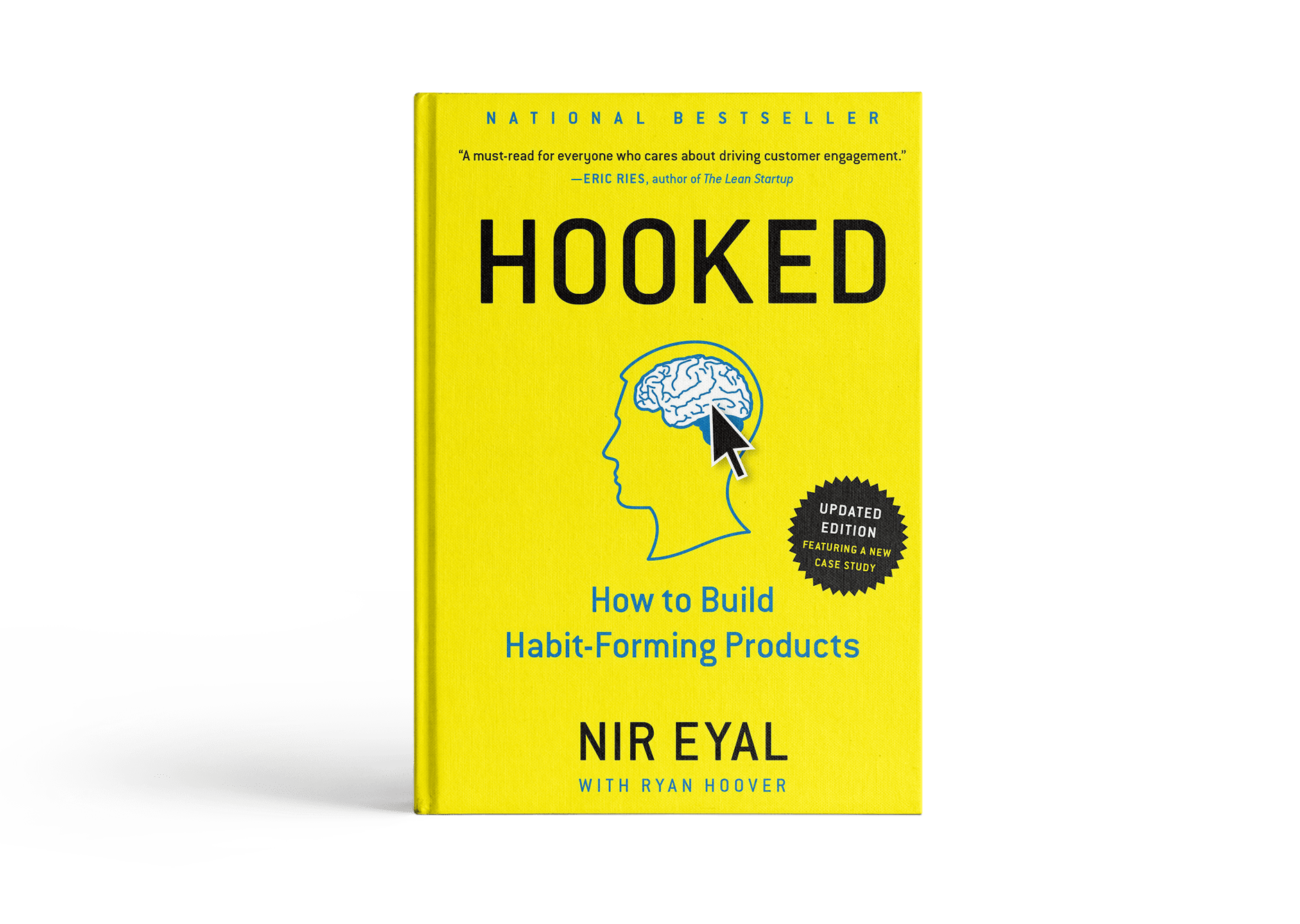
How to do that? There are four stages required to successfully build a habit:
- Trigger (which prompts customers to use the product)
- Action (the habitual behavior)
- Variable reward (user is satisfied with the used product)
- Investment (the product becomes more valuable to the user due to money/time/effort invested in it)
According to Nir Eyal, the author of the book “Hooked” dedicated to subscription businesses, there are three basic reasons why customers cancel their commitment to products. Either there are too many steps to psychological relief, there’s a lack of novelty, or a lack of value.
To avoid subscription cancellations, companies have to be creative. For instance, they can prepare apps or devices that will remind the user about a certain habit or even order products automatically when the previous ones are almost finished.
Bottomless Coffee is a great example – the coffee beans come with a smart scale that connects to the customer’s Wi-Fi. It measures the amount of coffee inside and triggers the next subscription order when the user is low on beans.
Nurturing Growth in the Subscription Economy
The forecasts for the subscription industry are rather positive. According to experts, the biggest market will be beauty and personal care, while the food and snacks segment will rapidly grow. The Kearney report sheds light on the types of products customers are interested in, and some of the most promising areas are groceries and baby care items. Offering subscriptions in these categories could be a great business idea.

In the constantly expanding realm of digital marketing, mastering the nuances of product subscriptions could be a chance for brands to strategically create new revenue streams. Newcomers can also bet on subscription-only models, but they have to cautiously prepare valuable offers and create customer retention strategies.
As the subscription economy continues to flourish, being aware of the insights we’ve provided will undoubtedly empower companies to thrive in this sector.




